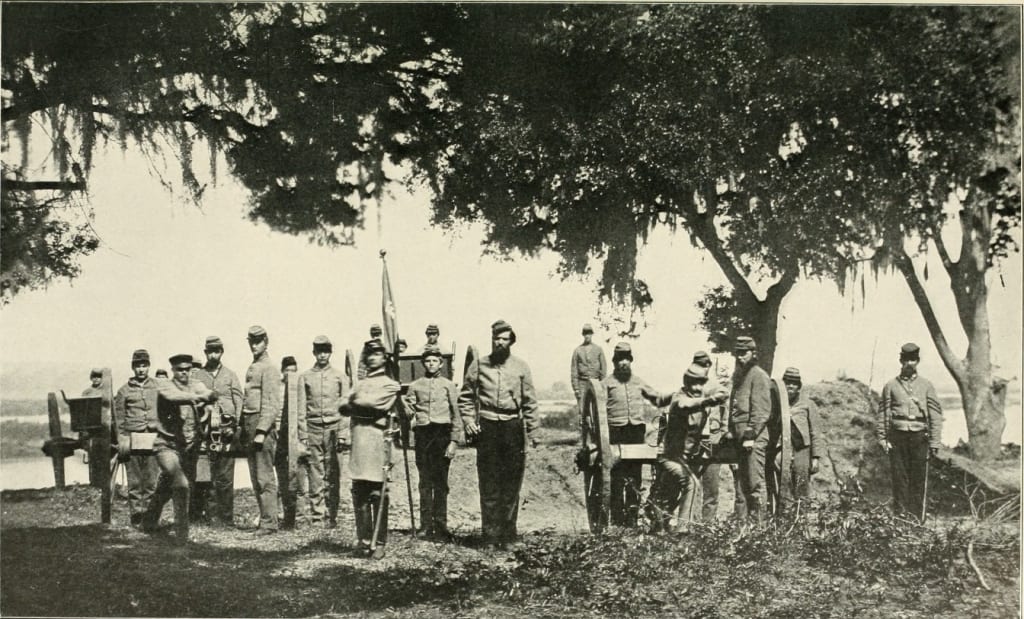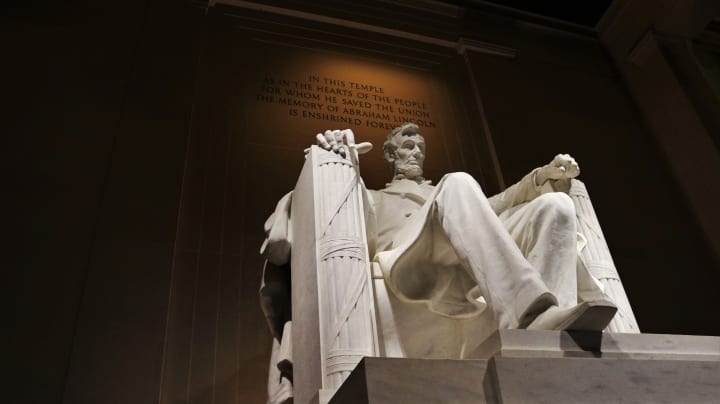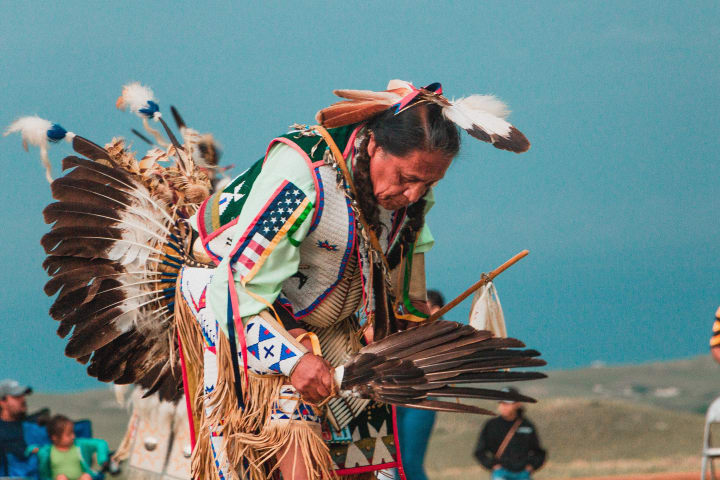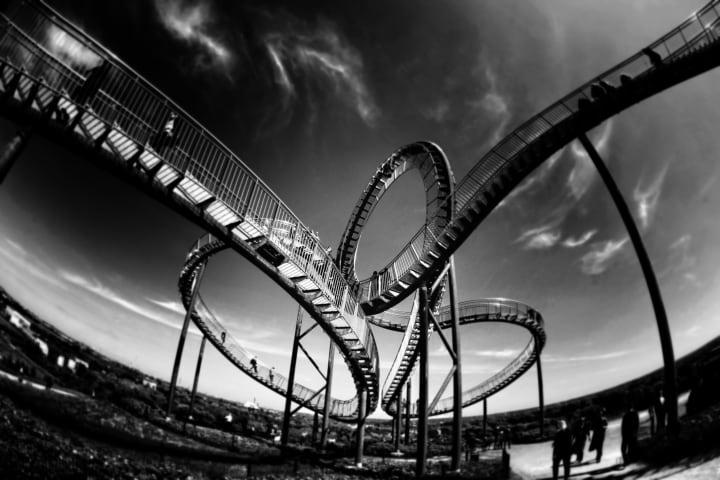The History of the Rebel Yell
The history of the rebel yell: a battle cry used by Confederate soldiers. Not to be confused with the 1983 Billy Idol album.

I don't know whether to thank or admonish Billy Idol for his hit, new wave album Rebel Yell. Sure, he ensured that the term "rebel yell" exists at the forefront of the American lexicon for a few more years, but now we run the risk of people thinking of "rebel yell" as merely an artifact of the 80s. The original rebel yell is actually an important—but often overlooked—piece of cultural history from the Civil War. Learning the history of the rebel yell is important if you want to gain a fuller understanding of the Civil War and the cultural history of the American south.
The Rebel Yell

Photo by Kelli Dougal on Unsplash
Spoiler alert: We don't actually know what the rebel yell sounds like. We do, however, at least know what it was used for. The rebel yell was a battle cry and rallying call utilized by Confederate soldiers during the American Civil War. The rebel yell served multiple purposes, but was primarily useful during charges, when it served as a morale booster and as a means of intimidating opposing Union soldiers.
There are no recordings of the yell from the Civil War itself, but there are some audio and video recordings from the first half of the 20th century. These recordings were taken at reunions for Civil War veterans. Former Confederate soldiers stepped up to the mic to record their decades-old memory of what the rebel yell sounded like. In the 1930s, a group of 12 Confederate veterans gathered to perform the yell individually and as a group. In 1935, a 90-year-old veteran of the Confederacy's 37th North Carolina Regiment was recorded performing the yell. The Library of Congress has these recordings on file, as well as a number of books about the civil war that will make you rethink everything, which you'd think would solve the mystery. Unfortunately, however, there's only so much information one can extract from some fuzzy clips from the 1930s.
Contemporary accounts differ drastically in terms of what the rebel yell sounded like. A common remark from Union soldiers upon hearing a yell was that it was either "Jackson or a rabbit," referring to Confederate General Thomas "Stonewall" Jackson. This suggests that the sound of the rebel yell may be related to the sound of a rabbit's scream. However, other accounts liken it to the sound of a cougar or a fox.
Ultimately, the answer is likely that there were multiple versions of the yell and that it may have varied between regions, regiments, or even from person to person. Many specifics in the history of the rebel yell remain unknown, such as if different iterations of the yell were intentionally used to identify different military units or maneuvers or if regional differences developed by chance. Furthermore, some historians argue vehemently that the rebel yell was nearly identical across many regions. We will likely never know for sure exactly what a true rebel yell sounded like, and we'll certainly never understand what it must of felt like to hear the yell in the midst of battle—from either side.
Origins

Photo by Andrew James on Unsplash
It's not particularly easy to study the origins of a battle cry that has never truly been heard by any living person. However, there is a good amount of historical evidence that helps us contextualize the rebel yell alongside other war cries from groups that may have influenced Confederate soldiers (and Civil War blockade runners...probably) in developing their own yell. A great deal of evidence roots the origins and history of the rebel yell in the hunting cries and war whoops of Indigenous Americans, many of whom sided with the Confederacy during the American Civil War. Notably, many Comanche soldiers influenced Confederate troops stationed in Texas with their own variety of war whoops.
In addition to the theory of Indigenous American influence on the development of this Confederate battle cry, a separate theory links the rebel yell to the influence of Scottish Highlanders. Specifically, the rebel yell was linked to a battlefield shock tactic known as the "Highland charge," during which dozens of highland soldiers in wedge-shaped formations would charge down a hill at top speed. Scottish and Celtic soldiers would employ this scare tactic at the start of a battle with the goal of instilling fear in the enemy. Charging soldiers would fire their muskets and let out a distinctive, howling battle cry. Often, soldiers would also be mostly or completely unclothed and adorned with war paint.
Stonewall Jackson was once quoted as saying, "Reserve your fire until they come within 50 yards, then fire and give them the bayonet, and when you charge, yell like Furies." This strategy is extremely similar to the battlefield techniques of Highland warriors, making it likely that the influence was intentional. Some historians have uncovered genetic evidence of this influence as well. In early United States censuses from the years leading up to the American Civil War, the vast majority of "Northerners," especially from the New England area, were of Anglo-Saxon ancestry. Comparatively, approximately 75 percent of Southerners—many of whom would join the Confederate Army—were Celtic in origin.
Besides the theories of Indigenous American or Scottish Highlander influence, there are multiple other ideas as to the origins of the rebel yell. There is evidence to support that the yell has origins rooted in specialized fox hunting cries. Ultimately, the truth is likely that a combination of all of these factors, along with others we may not even know about, are significant to the history of the rebel yell. Having multiple origins would also help explain why there may have been various regional "dialects" and different interpretations of the yell itself.
Today

Photo by Mark Asthoff on Unsplash
The word "history" has connotations of consisting solely of events that happened years and years ago, or of people who have long been dead. The fact of the matter is that every passing moment becomes history, and you experience and create and become part of history every minute of every day. With that in mind, the history of the rebel yell continues to this day, and its influence has not left us.
Besides the Billy Idol album and song named after the phenomenon, a number of other notable musicians, including Eminem and Coldplay, have incorporated "rebel yell" into their lyrics. A roller coaster at the Kings Dominion amusement park in Richmond, Virginia used to be named Rebel Yell and incorporated Confederate themes. In light of public opinion shifting against the preservation of Confederate imagery, the coaster was renamed Racer 75 in 2018. I'm not here to comment on that larger issue, but I believe it's important to know that the rebel yell is more that songs from your 80s Billy Joel playlist, and is significant culturally for a variety of reasons.
About the Creator
Joseph D. N. Kendrick
Writer of words. Haver of cats. joeykendrick.com






Comments
There are no comments for this story
Be the first to respond and start the conversation.